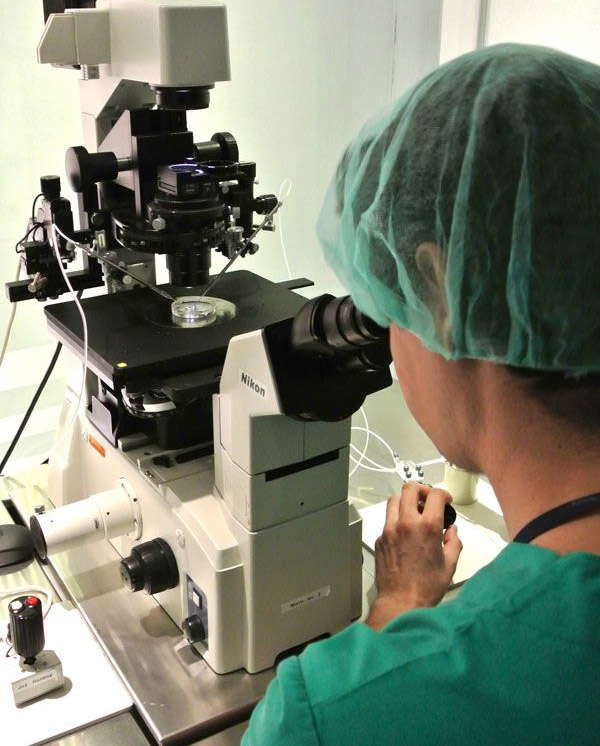Female investigations
Ovulation and hormonal assessment
Regular ovulation is assessed by a blood test to measure Progesterone – normally on the 21st day of the cycle. Follicle tracking by a series of ultrasound scans to assess the growth of the egg and may also be arranged if we are in doubt as to the timing of ovulation. Hormone tests such as FSH, LH and Prolactin are usually performed day 2-5 of the cycle. The FSH is particularly helpful in assessing how active the ovaries are and how much reserve of eggs is left.
Ultrasound assessment of the pelvic organs
This is undertaken as a transvaginal ultrasound scan (TVS) and provides very useful information about the shape of the womb, the health of the lining of the womb and the ovaries. In particular it can tell us whether the ovaries are polycystic, whether there are any large cysts in the ovary such as may be caused by endometriosis or whether there are any fibroids affecting the uterus.
Assessment of Fallopian tubes
The Fallopian tube is where fertilization of the egg by the sperm occurs. If the tube is blocked or damaged the egg and the sperm cannot meet up together and fertilization will not take place. It is common to carry out an assessment to check whether there is any blockage in the tube. It will depend upon your gynecology and medical history as to which investigation is most appropriate in your case. There follows a brief description of the options.
Hysterosalpingography (HSG)
This is an x-ray of the fallopian tubes and uterus. It is performed in the x-ray department and usually does not require a general anesthetic. A radio-opaque dye is passed up through the cervix into the uterine cavity. The dye shows up on the x-ray and the doctor is able to see if the dye flows out of both fallopian tubes into the abdominal cavity.
Laparoscopy
A slim telescope, called a laparoscope, is inserted through a small incision made in the abdominal cavity under anesthetic to enable the doctor to see the uterus, fallopian tubes and ovaries. Dye is injected into the uterus via the cervix to test tubal patency. If the tubes are healthy the dye can be seen passing along them and escaping through the outer opening of the tubes.
Male investigations
Examination
If there is a severe abnormality of the sperm or if the male partner is complaining of symptoms related to the scrotal area it may be necessary to undertake an examination to determine whether there are any abnormalities present.
Semen analysis
You will be asked to arrange an appointment to produce a semen sample. This can be done after 3-5 days of abstinence of intercourse.
Blood tests
If there is a severe abnormality of the sperm, blood tests are normally undertaken to assess the hormone levels and chromosome status in order to investigate the problem further.
Ultrasound scan and Doppler
An ultrasound scan may be required to look at the male gonads that form part of the reproductive system.
Treatment options
Once we have enough information from the results of test to understand the cause of the infertility we will recommend treatment which is most appropriate to your circumstances and needs. It is not possible to describe all possible eventualities but the following are broadly what may be offered:
a) If the female is not ovulating this can be corrected by the use of drugs and the monitoring of response by ultrasound. This is known as ovulation induction.
b) If there is a blockage or scar tissue around the Fallopian tubes tow possible options may be discussed. These are IVF or Tubal surgery
c) If there is significant endometriosis we may offer treatment for this or discuss the use of assisted conception treatment such as IVF or Intra Uterine Insemination treatment.
d) If there is a major concern about the numbers or quality of sperm we may discuss IVF with ICSI.
e) If the infertility problem is unexplained we may advise that a naturally conceived pregnancy is still very likely to occur or that some help should be given such as IUI or IVF treatment.

